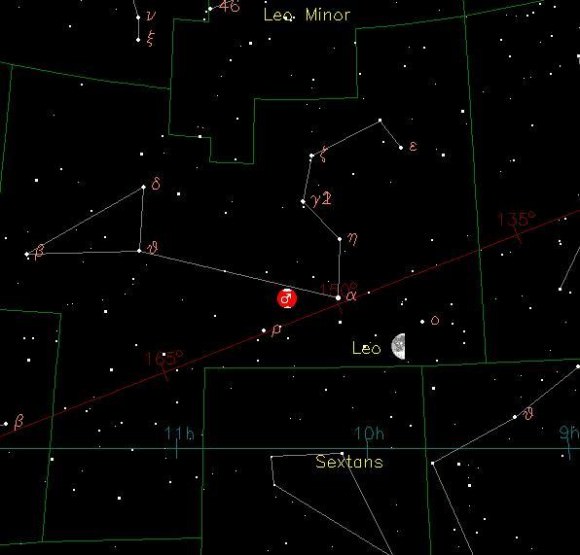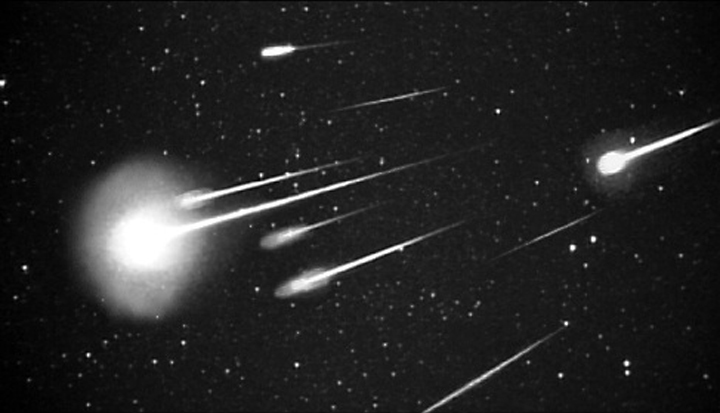[/caption]
Are you ready for a good, predictable meteor shower? Then break out your favorite skywatching gear because the 2011 Leonid meteor shower is already sparkling the skies…
In the pre-dawn hours on the mornings of November 17-19th, the offspring of Comet Temple/Tuttle will be flashing through our atmosphere at speeds of up to 72 kilometers per second – and enticing you to test your meteor watching skills against partially moonlit skies. Although the waning Moon will greatly interfere with fainter meteor trails, don’t let that stop you from enjoying early evening observations, or enjoying your morning coffee with a handful of “shooting stars” which will be emanating outward from the constellation of Leo.
Where in the skies do you look? For all observers the constellation of Leo is along the ecliptic plane and will be near its peak height during best viewing times. When? Because of the Moon, earlier evening observations are favored (before local midnight), but just a couple of hours before local dawn is the best time to watch. Why? Read on!
Although it has been a couple of years since Temple/Tuttle was at perihelion, don’t forget that meteor showers are wonderfully unpredictable and the Leonids are sure to please with fall rate of around 20 (average) per hour. Who knows what surprises it may bring! Each time the comet swings around our Sun it loses some of its material in the debris trail. Of course, we all know that is the source of a meteor shower, but what we don’t know is just how much debris was shed and where it may lay.
“The Moon is going to be a major interference, but we could see a rate of about 20 per hour,” said Bill Cooke, head of NASA’s Meteoroid Environments Office at NASA’s Marshall Space Flight Center in Huntsville, Alabama. “Some models, including ours, indicate that particles may encounter Earth on November 16 at around 5:30 p.m. EST [2230 GMT], where we could see anywhere from 100 to 200 meteors per hour. So, we could get a Leonid outburst, but unfortunately it is not favorably placed for viewing from the United States.”
As our Earth passes through the dusty matter, it may encounter a place where the comet let loose with a large amount of its payload – or it may pass through an area where the “comet stuff” is thin. We might even pass through an area which produces an exciting “meteor storm” like the Leonids produced in 1883! For those in the know, the Leonid meteor shower also made a rather incredible appearance in 1866 and 1867 – dumping up to 1000 (not a typo, folks) shooting stars recorded even with a Moon present! It erupted again in 1966 and in 1998 and produced 3000 (yep. 3000!) video recorded meteors during the years of 2001 and 2002. But remember, human eyes may only be able to detect just a few. So what’s a realistic guess?
According to Cooke; “We could see rates of about five meteors per hour,” he explained. “If people want to see the Leonids, it might be good to watch the nights of November 16th and 17th. Instead of just going out one night, you might want to go out twice.”

And to make this year’s show twice as nice, you’ll have a hard time not being distracted with the Moon and Mars being right on the radiant! You won’t be able to miss the Red Planet as the Moon slides along south… First to Mars’ west and then to the east on the nights of November 18th and 19th.
What a terrific show!

